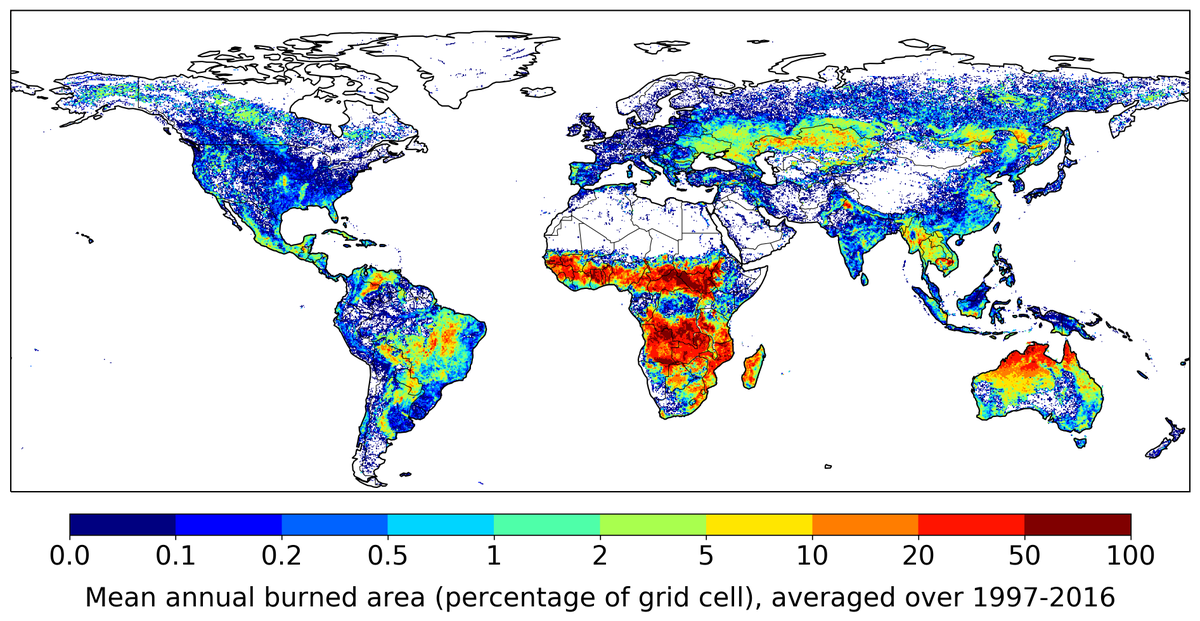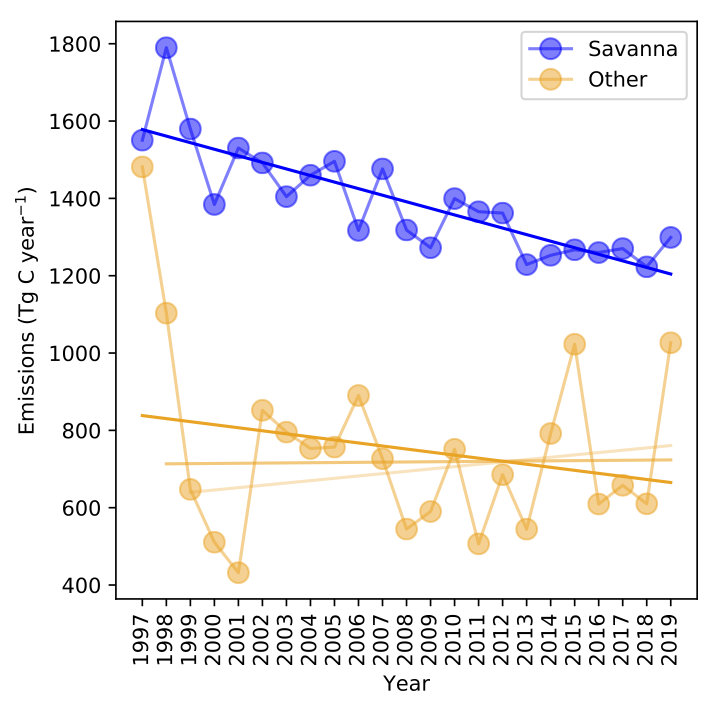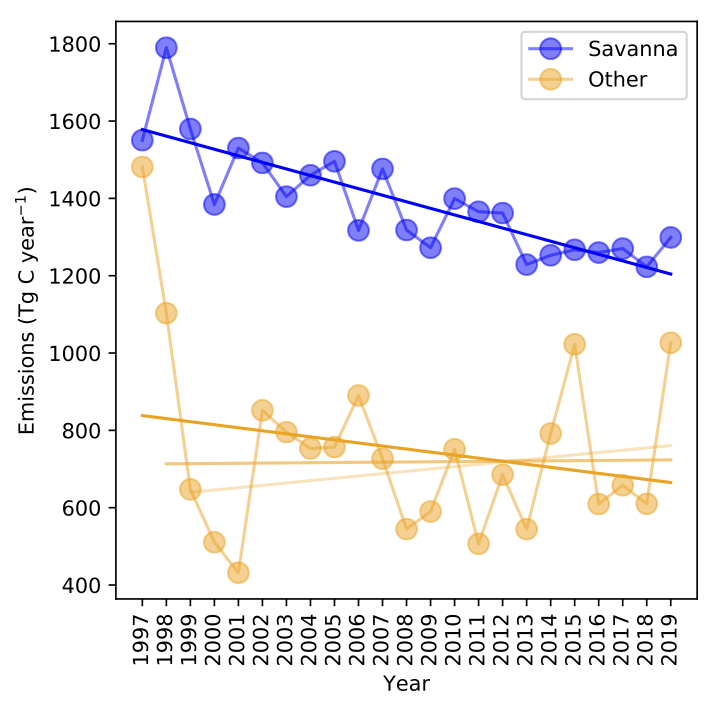1/7
Are #wildfires increasing or not? There is quite a bit of confusion about this, partly related to a 2017 Science paper of our group led by Niels Andela showing burned area has declined
A thread on global fire science
@ShellenbergerMD @BjornLomborg https://science.sciencemag.org/content/356/6345/1356">https://science.sciencemag.org/content/3...
Are #wildfires increasing or not? There is quite a bit of confusion about this, partly related to a 2017 Science paper of our group led by Niels Andela showing burned area has declined
A thread on global fire science
@ShellenbergerMD @BjornLomborg https://science.sciencemag.org/content/356/6345/1356">https://science.sciencemag.org/content/3...
2/7
Here is a map of global burned area produced by Louis Giglio (UMD, NASA) based on MODIS data. Total global area is equivalent to the size of the EU.
The red areas are in the subtropics are mostly savannas, responsible for some 90% of global burned area. Only the grasses burn
Here is a map of global burned area produced by Louis Giglio (UMD, NASA) based on MODIS data. Total global area is equivalent to the size of the EU.
The red areas are in the subtropics are mostly savannas, responsible for some 90% of global burned area. Only the grasses burn
3/7
Due to many socio-economic changes (land fragmentation, increase in agriculture) burned area in savannas is declining. Whether that is good or bad depends on your perspective. The decline is substantial, more than 25% over the past two decades.
Due to many socio-economic changes (land fragmentation, increase in agriculture) burned area in savannas is declining. Whether that is good or bad depends on your perspective. The decline is substantial, more than 25% over the past two decades.
4/7
Note that in savanna fires only the grasses burn; CO2 emissions are quickly compensated for when grass grows back in the wet season.
While savanna burned area and emissions decline, emissions from all other fire types combined have been more stable over 1997-2019
Note that in savanna fires only the grasses burn; CO2 emissions are quickly compensated for when grass grows back in the wet season.
While savanna burned area and emissions decline, emissions from all other fire types combined have been more stable over 1997-2019
5/7
On a somewhat longer time scale and/or when looking on a more regional scale forest fires are often increasing. There is a great overview paper by @Jones_MattW showing the clear linkage between warming and increasing wildfires
https://sciencebrief.org/briefs/wildfires">https://sciencebrief.org/briefs/wi...
On a somewhat longer time scale and/or when looking on a more regional scale forest fires are often increasing. There is a great overview paper by @Jones_MattW showing the clear linkage between warming and increasing wildfires
https://sciencebrief.org/briefs/wildfires">https://sciencebrief.org/briefs/wi...
6/7
This is not surprising given that rising temperatures lead to longer fire seasons and increase flammability.
It is important to note that other factors, including forest management, arson, changes in land use, etc. also play a role in changes in fire occurrence
This is not surprising given that rising temperatures lead to longer fire seasons and increase flammability.
It is important to note that other factors, including forest management, arson, changes in land use, etc. also play a role in changes in fire occurrence
7/7
So, are #wildfires increasing or not?
There is no simple answer, it depends on definition and time scales. What we know with certainty is that savanna fires are decreasing and that in many temperate and boreal regions forest fires are increasing.
So, are #wildfires increasing or not?
There is no simple answer, it depends on definition and time scales. What we know with certainty is that savanna fires are decreasing and that in many temperate and boreal regions forest fires are increasing.

 Read on Twitter
Read on Twitter




